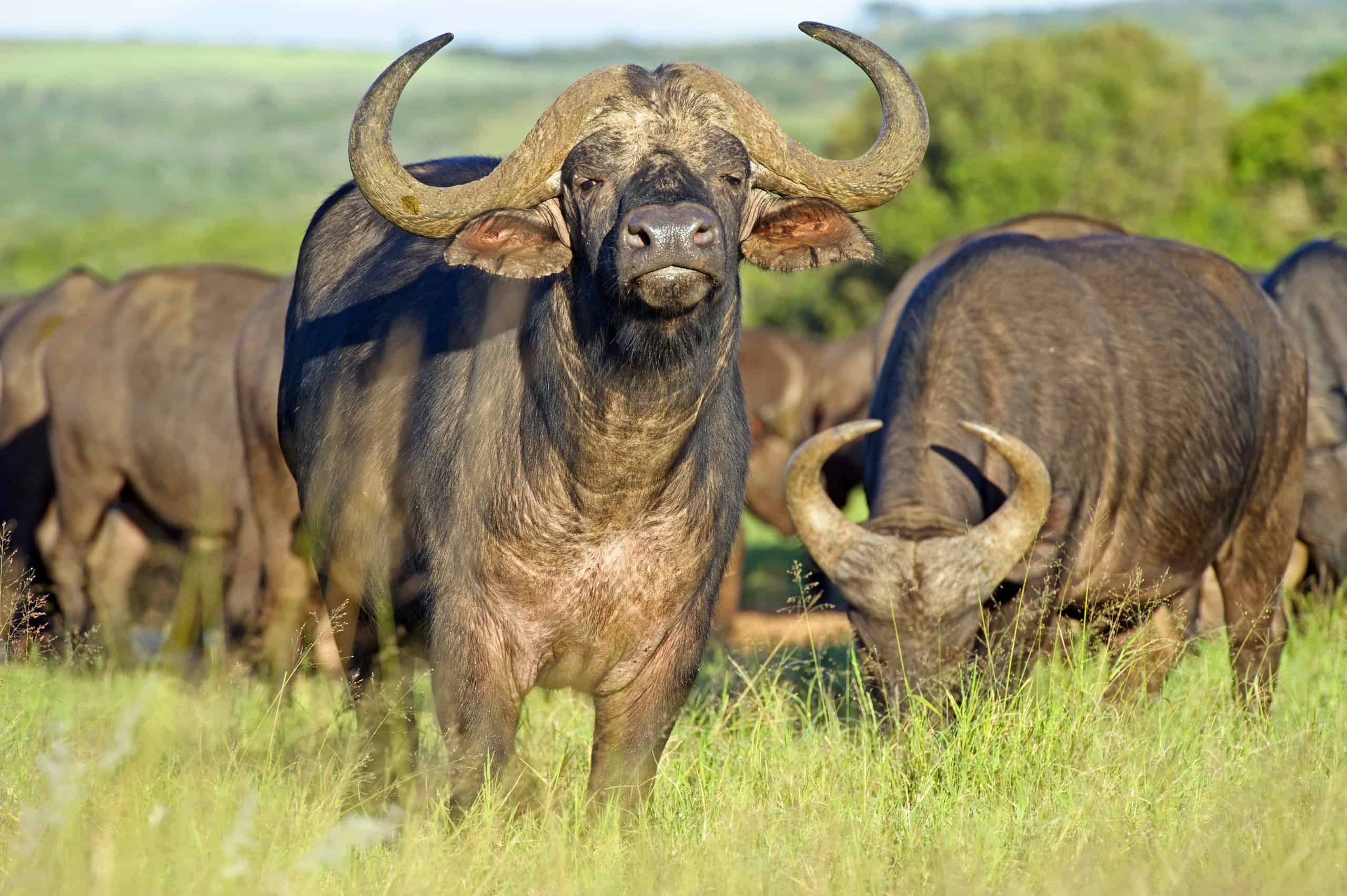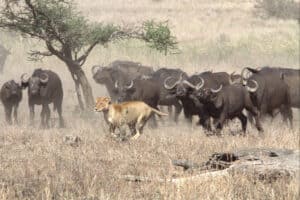A small group of six Cape Buffalo is seen grazing in the vast open plains of Africa in the video below. They have a young calf that looks to be only a few months old. Suddenly a pack of 30 hyenas starts to rush in, sensing this easy meal with this young calf. Watch what happens!
The buffalos immediately notice this danger and form a box around the young calf to protect it. The hyenas know that these large buffalo are too big for them to take down with multiple buffalos present.
If one of the buffalos were alone, this pack could easily take that one down; however, with six large buffalo, this would be impossible. But, if they can get their teeth into the calf and drag it away, they will have the advantage.
The buffalos know this, and so they continue to rotate on every side as the hyenas try their best to get in to grab the calf. The hyenas try their best to regroup and find an avenue to get into this small formation. But, the buffalos use their intimidating size to scare the hyenas from rushing into them.
It is clear from the video that the buffalos are getting tired. With only six of them compared to the 30 hyenas, they must be alert at every angle. The young calf knows that danger is near, but he still doesn’t understand the gravity of the situation. As he tries to run and keep up with his small group, they continue to pull him into the center.
How Large are Hyena Packs?
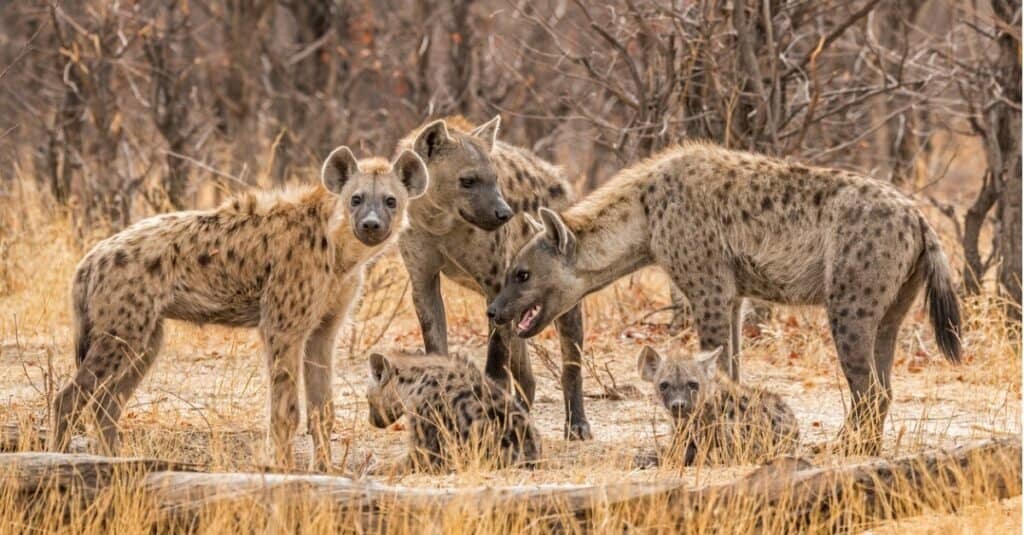
Hyenas can run up to 40 miles per hour.
©iStock.com/Franz Schallmeiner
Hyenas can hunt in a variety of pack sizes. For example, a lone hyena typically hunts small animals like foxes on their own to feed themselves. However, when it comes to taking down larger animals, hyenas will depend on their packs to be able to come together so they can hunt and take the animal down for a successful kill.
Heyna packs can be as few as 10 – 15 individuals. However, in many cases, hyena packs can reach 80 or even 100 individuals. While hyenas will not always live together every day of the week, when it comes to taking down large animals, they will call for the pack to band together to take the animal down.
What do Hyenas Eat?
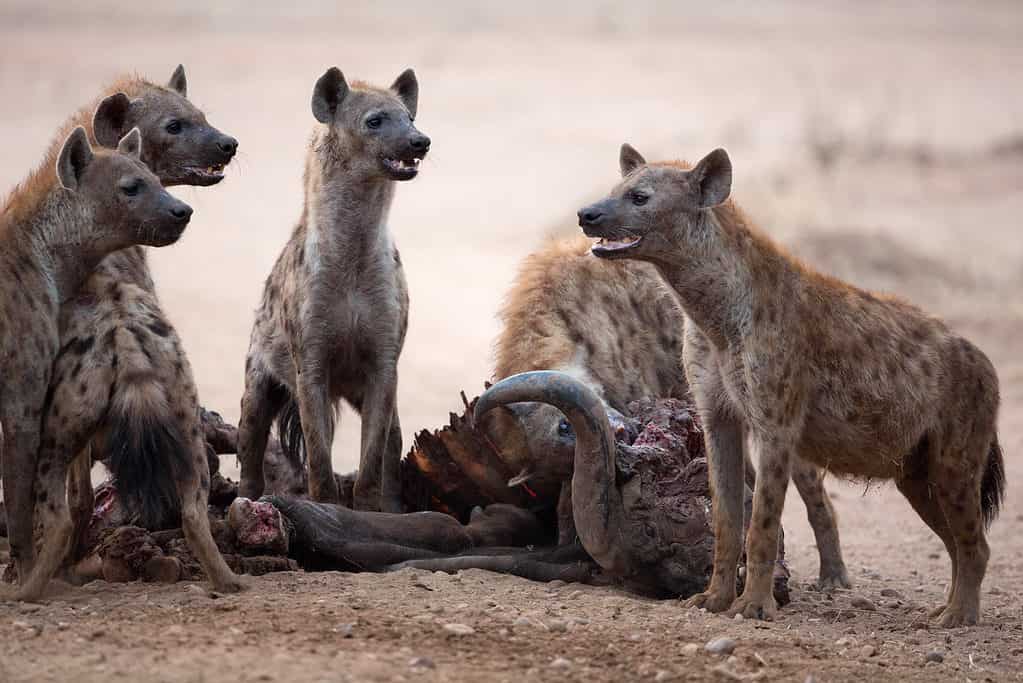
Hyenas eat the entire animal including bones.
©Jez Bennett/Shutterstock.com
These odd-looking creatures are famously known for their hilarious laugh. Despite that common knowledge, not all hyenas laugh, actually! Hyenas weigh anywhere from 90 – 190 pounds and typically can reach up to speeds of 37 miles per hour.
While hyenas will enjoy the dead carcass of just about any animal, they also prefer the taste of live flesh. Hyenas enjoy wildebeests, monkeys, birds, and various small animals that are easy to chase down.
With hyena packs sometimes reaching up to 80 individuals, it is incredibly easy for them to have the numbers and the power needed to take down an animal.
Buffalo Calf Facts
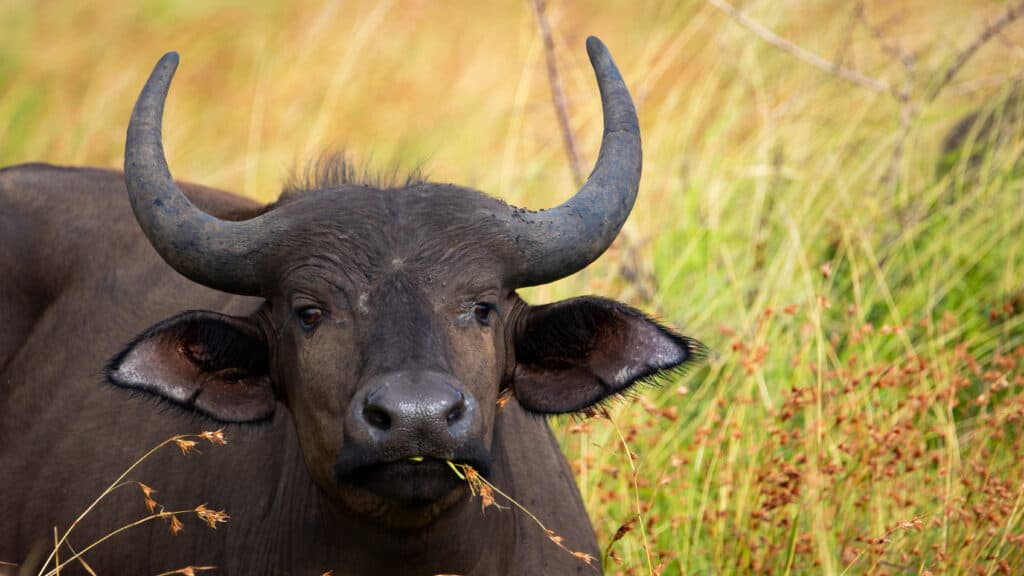
Buffalo calf can be born weighing as little as 25 pounds.
©Jurgens Potgieter/Shutterstock.com
Adult female buffalo will give birth every few years and typically have one calf at a time. Male buffalo will have no involvement in the upbringing of the calf, which is typical and can be said of many male animals in the animal kingdom.
Once the calf is born, they usually depend on the mother for up to a year. Should they ever be in trouble, the herd will come to protect them if they are heard calling out.
In this video, the calf could have very well found itself alone and felt the threat of hyenas and called out, and the buffalo herd responded by coming to the calf’s rescue.
Along with the calf’s vocal cry, adult buffalo also have communication abilities. Although they are quieter than cattle, they will omit a lower pitch. This type of call usually occurs when the herd is moving along, when danger is near, or for other typical reasons while grazing.
How Large are Buffalos?
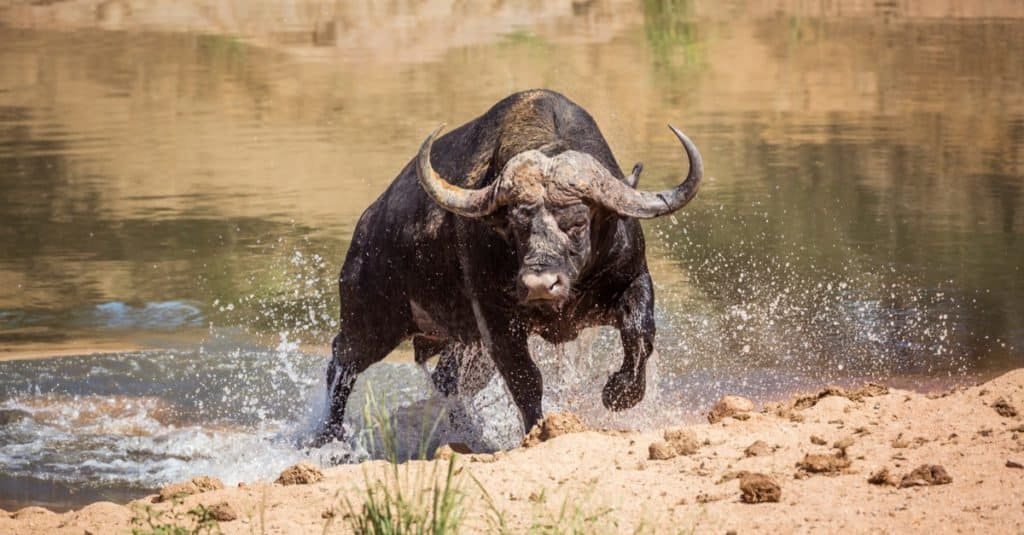
Cape buffalo, despite weighing as much as a ton, eat grass, leaves, and shrubs.
©PACO COMO/Shutterstock.com
In the video, these particular buffalo are called Cape Buffalo. They are amongst the largest African buffalos.
These buffalo can weigh anywhere from 1,323 – 2,000 pounds. They can run up to 40 miles per hour and jump and maneuver 6 feet at times. These beasts would be an absolute challenge for any animal to attempt to take down.
This is why buffalo are often seen in herds of 50 – 500 individuals. There is power in numbers. And as we saw in the video below, just a mere six adult buffalos caused the 30 hyenas not to rush in and grab one of them.
Is it Normal for Buffalo to Attack Other Animals?

Cape buffalo, despite weighing as much as a ton, can race up to 40 mph, jump up to 6 feet vertically, and can quickly pivot to combat predators.
©PACO COMO/Shutterstock.com
Buffalo are considered one of the most aggressive animals in Africa and it is said that they killed more hunters than any other animal. It is also noted this species never forgives and never forgets and they are vengeful, having been known to seek revenge not only on other animals but on humans as well. They become even more aggressive when angry or wounded and rather than flee, will counter-attack their enemies.
These mammals have a reputation for lying in wait, which may appear to an outsider as simply lying around and not doing much, but once they have set their eyes on their targets, they will charge. They have been known to attack other animals for being in the vicinity of their herd. Certain species, like the Cape Buffalo, are even referred to as Black Death or Widowmakers. When the cape buffalo is protecting a calf or a wounded herd member, it is most aggressive and won’t hesitate to go in for the kill.
Thank you for reading! Have some feedback for us? Contact the AZ Animals editorial team.

